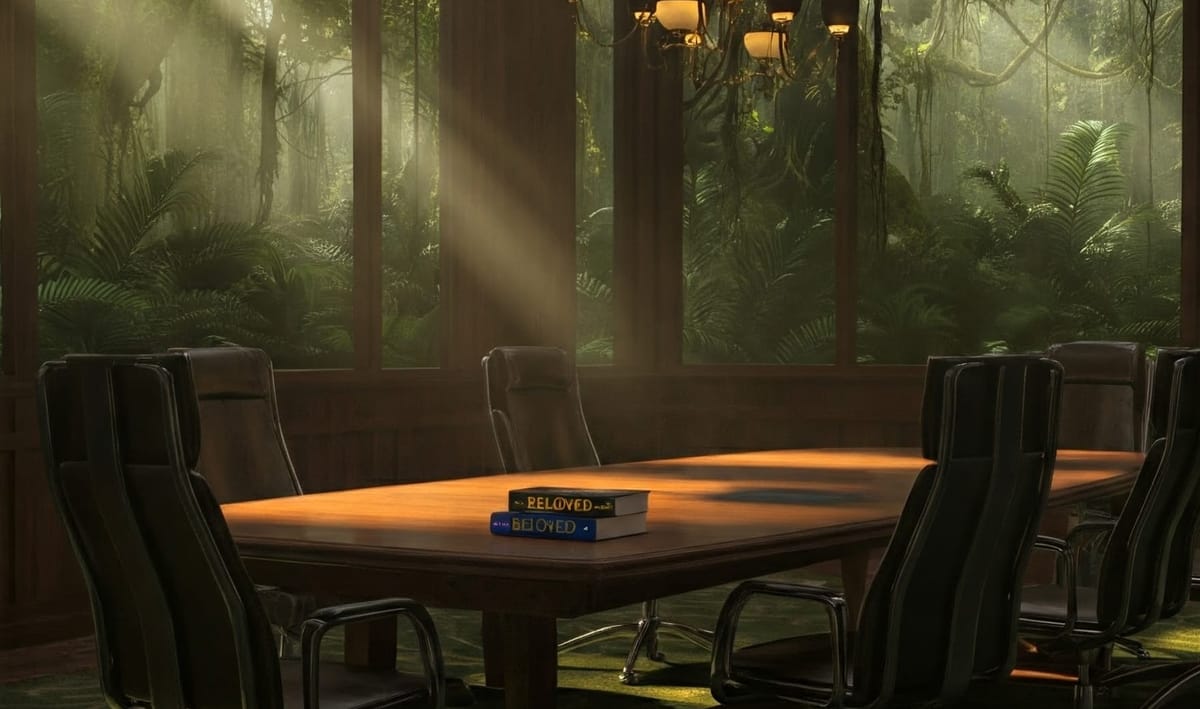Reimagining Strategy: If Toni Morrison Led the Boardroom

What would it look like if Toni Morrison led a strategic planning retreat?
I am forever in the midst of a human experiment, on myself. The experiment is to intentionally combine ideas often kept apart. In Where Good Ideas Come From, Steven Johnson suggests putting such segregated ideas together is where “good ideas come from.” Innovation often comes from the mixing of disciplines and fields of knowledge. My experiment for the last 10+years is to cycle between three kinds of books: those focused on business and leadership, those on issues of justice and equality, and those on environmental science. A recent cycle example is The Friction Project, Hood Feminism and The Golden Spruce.
In the midst of one such cycle, I was reading Toni Morrison's Beloved when also attending a strategic planning retreat. The heart-wrenching story woven together so masterfully contrasted with the super rational planning meeting where stories are hidden more than revealed. The worlds of strategy and novels started to mix together…
Let's merge and mix deep human storytelling from Morrison with the well-worn tools of corporate strategy.
Strategic Planning Revisited
In a world where strategic planning often feels like an exercise in cold calculus, let’s imagine a retreat orchestrated by the inimitable Toni Morrison. Picture this: a gathering not dominated by spreadsheets and analysis, but also by the evocative power of human stories and the emotional truths and insights they reveal. Stories of customers, clients and colleagues.
Morrison would surely beckon us to dive beneath the surface of data and metrics, and instead, wade into the rich depths of human experience and narrative.
At Morrison’s retreat, we would not merely present our plans; we would share our stories—those deep, resonant narratives that define who we are and why we do what we do. We would explore the convictions that drive us, the family histories that shape us, and the dreams that propel us forward. In this space, vulnerability would not be a weakness but a wellspring of insight and innovation.
This would be a severe departure from much strategic planning which appears to be a defense against vulnerability rather than a process to wrestle with the insights it might otherwise provide.
Picture this: a gathering not dominated by spreadsheets and analysis, but by the evocative power of human stories and the emotional truths they reveal.
In my experience, Morrison would have us lean into our hopes and fears, harnessing them as powerful catalysts for vision and connection. Frustration, shame, and inspiration would not be hushed or sidelined. Instead, they would be embraced as the raw materials for a strategy infused with authenticity and passion.
-Break-out groups featuring colleagues sharing stories of their greatest successes and failures.
-Open forums for colleagues to share their appreciations for fellow employees who went above and beyond or helped them in some meaningful way
-Happy clients and customers joining in-person or online to share their experiences of the brand or service.
-Unhappy clients and customers sharing stories that made them leave.
-Writing headlines and the first lines of a news feature 5 years in the future telling of a breakthrough for the company and the impact on people’s lives.
Such a process acknowledges a fundamental truth: most strategic planning is dominated by the head, yet it is the heart that fuels transformation. You have heard it said that, contrary to what they may self-report, people decide things with their emotions and then rationalize it with their intellect. Perhaps Morrison would invite us to embrace this fact about human life. Organizational visions and plans we commit to fully will be forged by our strong feelings and reinforced with excellent planning. To do one without other is foolishness.
The Head and the Heart
Morrison, a Nobel laureate and custodian of the human saga, would guide us to see that a company’s future is not solely charted by tactics and numbers. It is also shaped by the stories we tell, the relationships we forge, and the purpose we embody. Most strategy development ignores this simple fact.
In the hands of Morrison, strategic planning would value the intellect and the necessary plans and metrics it creates. But it would add vibrant hues of human connection that bring color to an otherwise bland exercise.
In this narrative-led approach, perhaps we would find not only a strategy but a shared vision—a testament to the enduring power of storytelling in shaping our world.
Invitation: how can you add storytelling and more of what makes us human to your next planning meeting?
Client stories, customer stories, employee stories, leadership stories...the entire drama of business life.
This is not the immature, vapid "drama" whipped up and spread by petty gossip, but the full Drama being played out in organizational life in our aspirations, hopes, and fears.
The whole Drama of human experience lies in wait as a resource for building inspired strategy and an effective, caring and creative culture.